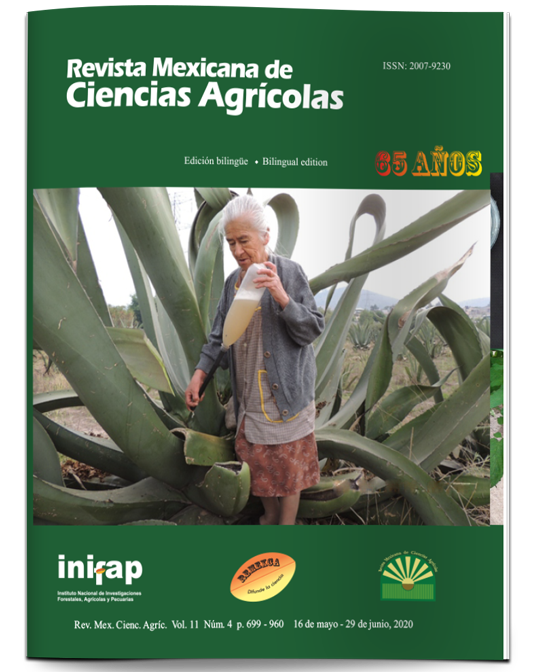Biofertilization and nutrition in the development of serrano pepper seedlings
DOI:
https://doi.org/10.29312/remexca.v11i4.2121Keywords:
plant nutrition, rhizobacteria, seedlingsAbstract
The production of quality seedlings is essential for optimal growth and good crop yields during transplantation; therefore, the objective of the present investigation was to determine the effect of bacteria that promote plant growth and the management of nutrition in the physiology and growth of serrano pepper seedlings. Under greenhouse conditions, an experiment was carried out with serrano pepper var. Tampiqueña 74, under a completely randomized design with a factorial arrangement of 2 × 2 × 2. The factors were: inoculation (with or without Pseudomonas tolaasii), substrate (with and without sterilization), and nutrient solution (Steiner and vermicompost tea) with a total of eight treatments with four repetitions each. The results indicate that the effect of P. tolaasii is highly significant in non-sterilized substrate and with Steiner solution, where the seedlings presented higher height, stem diameter, leaf area, and the dry biomass of the aerial part. In addition, the NO3 concentration in sap increased. With the vermicompost tea the inoculation only impacted on the radical length and volume, while with the Steiner solution it only had an effect on the nutritional content of N and K+ and growth rates. The inoculation of P. tolaasii in serrano pepper seedlings favors the physiology and nutritional concentration as long as the substrate is not sterilized. The least effect on seedlings occurs if only vermicompost tea is supplied.
Downloads
Published
How to Cite
Issue
Section
License
Copyright (c) 2020 Revista Mexicana de Ciencias Agrícolas

This work is licensed under a Creative Commons Attribution-NonCommercial 4.0 International License.
The authors who publish in Revista Mexicana de Ciencias Agrícolas accept the following conditions:
In accordance with copyright laws, Revista Mexicana de Ciencias Agrícolas recognizes and respects the authors’ moral right and ownership of property rights which will be transferred to the journal for dissemination in open access. Invariably, all the authors have to sign a letter of transfer of property rights and of originality of the article to Instituto Nacional de Investigaciones Forestales, Agrícolas y Pecuarias (INIFAP) [National Institute of Forestry, Agricultural and Livestock Research]. The author(s) must pay a fee for the reception of articles before proceeding to editorial review.
All the texts published by Revista Mexicana de Ciencias Agrícolas —with no exception— are distributed under a Creative Commons License Attribution-NonCommercial 4.0 International (CC BY-NC 4.0), which allows third parties to use the publication as long as the work’s authorship and its first publication in this journal are mentioned.
The author(s) can enter into independent and additional contractual agreements for the nonexclusive distribution of the version of the article published in Revista Mexicana de Ciencias Agrícolas (for example include it into an institutional repository or publish it in a book) as long as it is clearly and explicitly indicated that the work was published for the first time in Revista Mexicana de Ciencias Agrícolas.
For all the above, the authors shall send the Letter-transfer of Property Rights for the first publication duly filled in and signed by the author(s). This form must be sent as a PDF file to: revista_atm@yahoo.com.mx; cienciasagricola@inifap.gob.mx; remexca2017@gmail.
This work is licensed under a Creative Commons Attribution-Noncommercial 4.0 International license.



